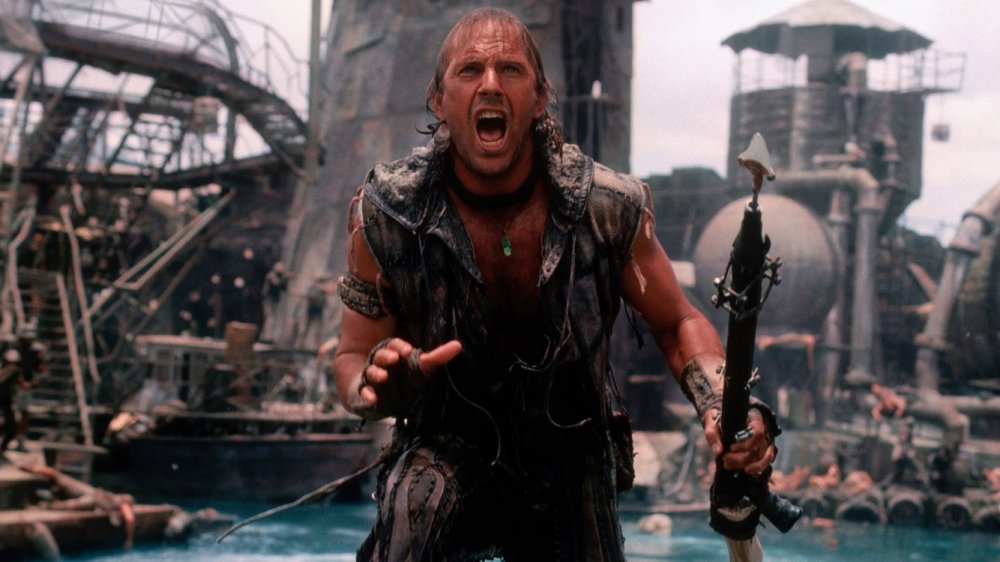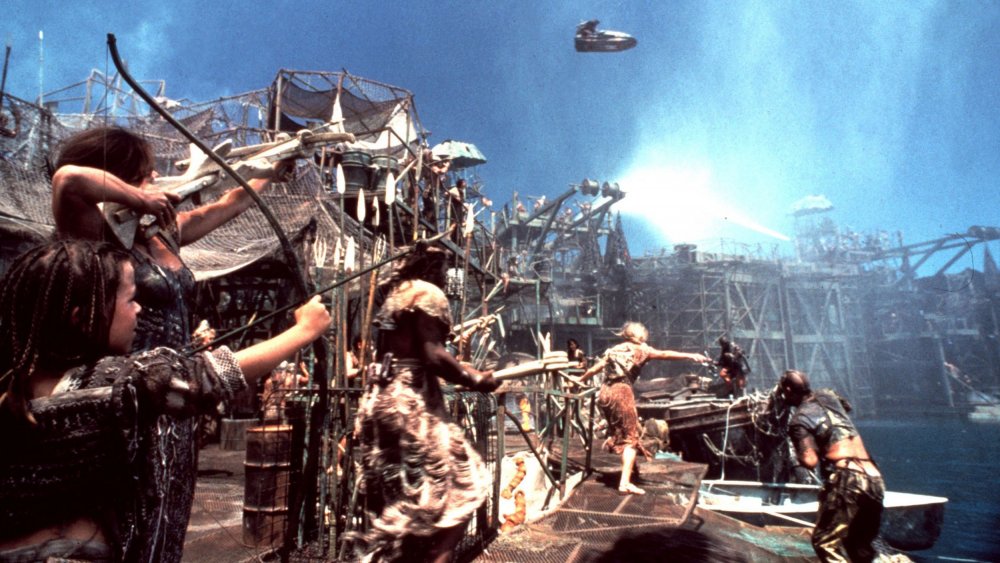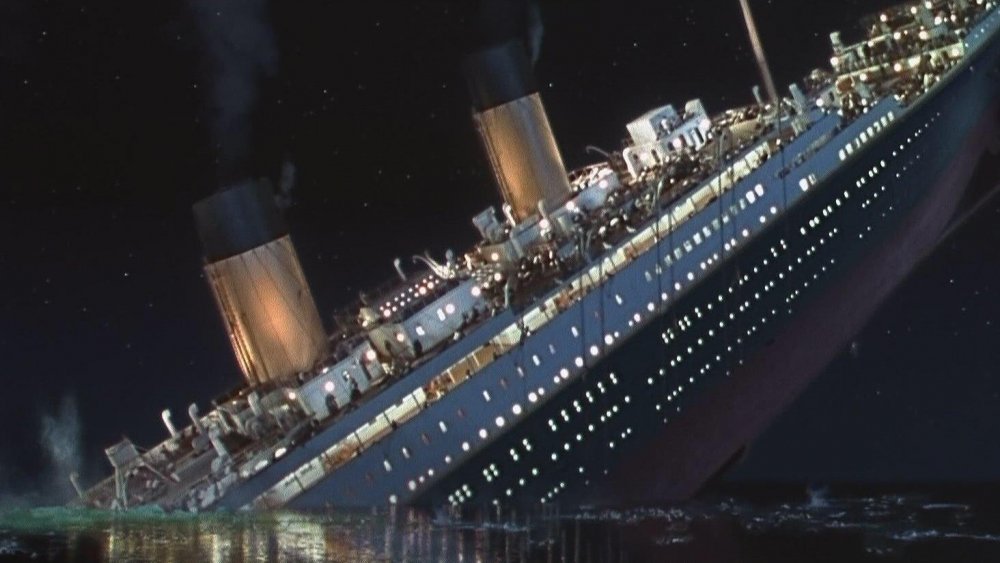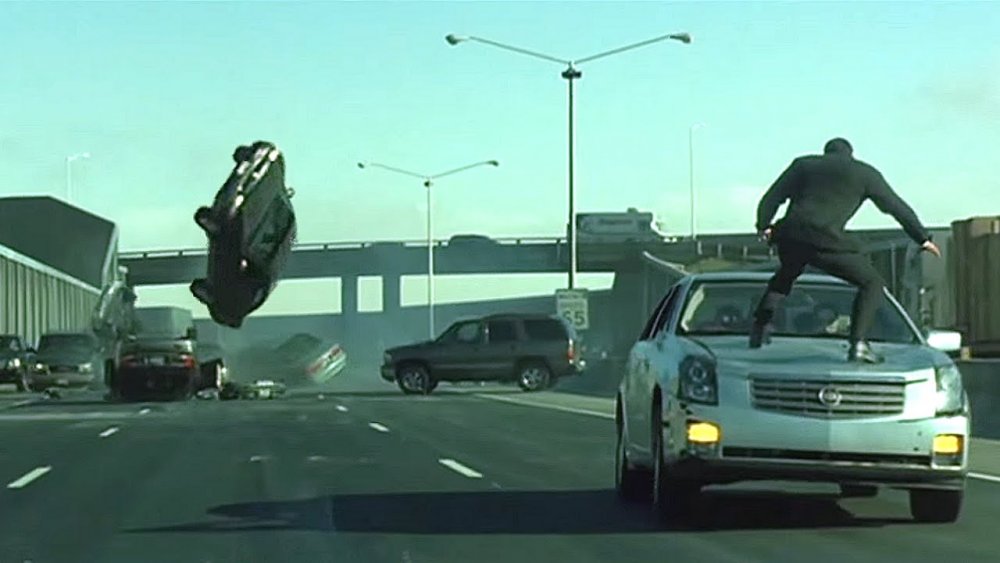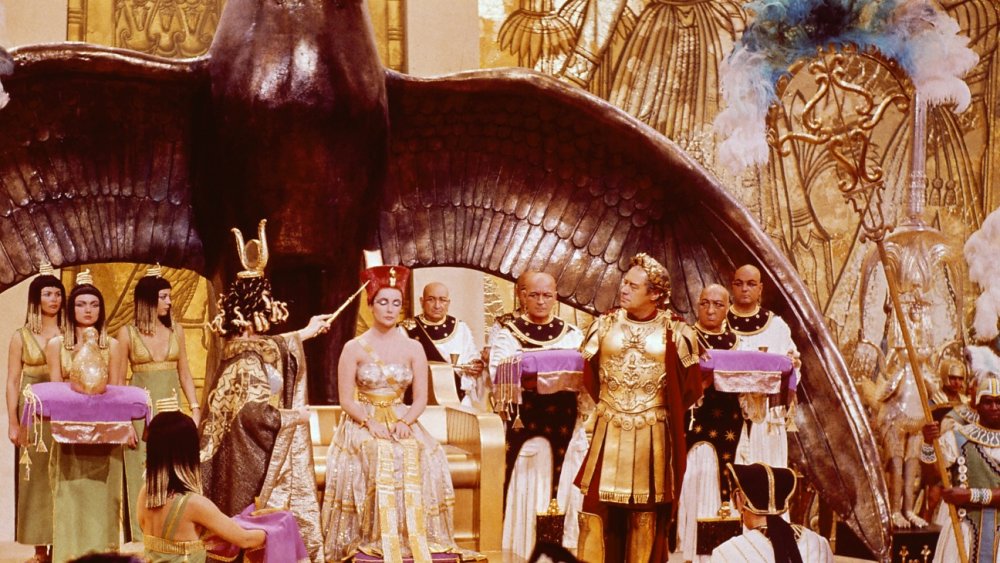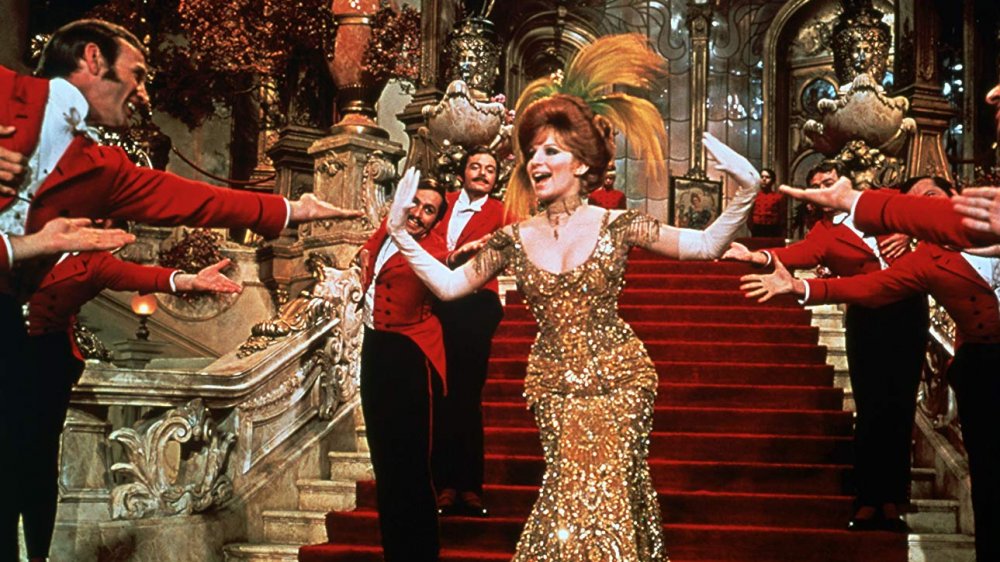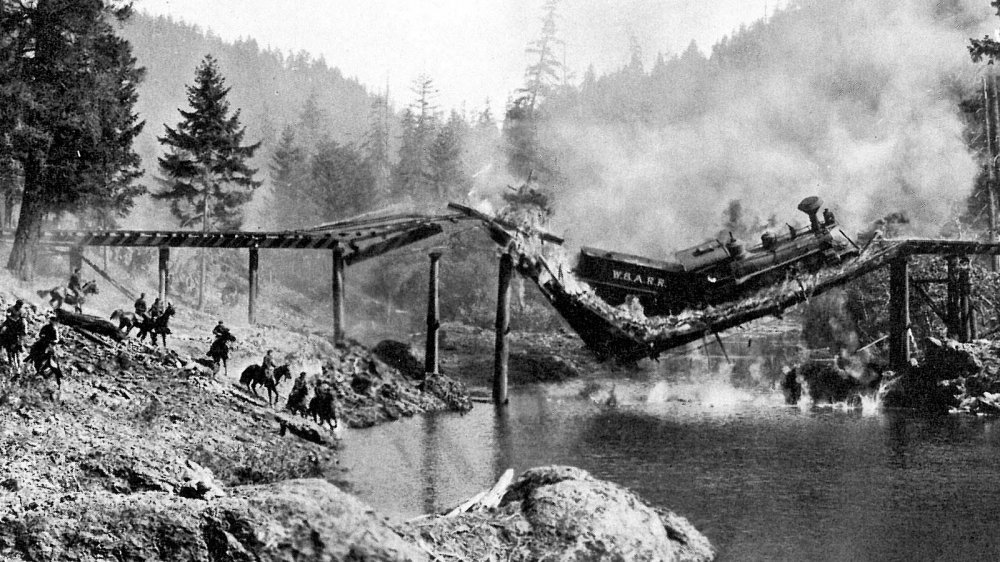The Most Expensive Movie Sets Ever Created
Movie studios are historically closemouthed about exactly how much a production costs and the specific details of where the budget ends up going during filming — for several reasons.
According to Investopedia, one of those reasons involves post-production marketing and other incidentals that can inflate production costs significantly. Another reason involves varying tax credits and incentives that a film might receive for filming in a certain location that might help bolster tourism to the region as well as create local jobs for the community. There are often no fixed tax incentives by law, so keeping previous numbers quiet prevents setting a costly standard. Profits from theater tickets also vary, as well as merchandizing deals and a variety of different paths when factoring in VOD and streaming services.
All that being said, some movies are so lavish in their spending — on sets in particular — that they're unable to keep the information secret. What were the most expensive movie sets ever made? Let's take a look.
Waterworld (1995)
Released in 1995, Waterworld is still widely seen as one of the biggest bombs of all time — even though it wasn't a bomb at all, delivering a $264 million worldwide return on the studio's reported $175 million investment. Certainly one thing that contributed to a negative perception of the movie by the numbers was going more than $75 million over budget, even though it was for very understandable reasons. Waterworld takes place in a dystopian future where the majority of the Earth's land masses have been submerged under water thanks to climate change.
Like Mad Max at sea, Waterworld imagines a world in which people must battle feral hordes of Smokers as they search for elusive Dry Land. Virtually the entire movie was filmed on floating sets off the coast of Hawaii, which was prone to regular hurricanes and typhoons. The sets had to be constantly repaired or even remade after storms, further complicating filming schedules and adding extra bucks to the budget on a minute-by-minute basis. It all added up to a movie that performed respectably at the box office, but needed to be a blockbuster hit in order to exceed expectations.
Titanic (1997)
At the time second only to Waterworld, James Cameron's historical action romance Titanic remains one of the most expensive films ever made. One of the main reasons: the nearly actual-size Titanic replica that Cameron built, parts of which were destroyed as the boat sunk. The movie cost upwards of $200 million by the end of its production, a whopping $20 million of which went toward building a studio in Mexico from scratch since there were no sound stages big enough to hold the Titanic replica.
How much the Titanic itself officially cost to build is one of those secret numbers buried in the budget, a sum so astronomical that the movie required the backing of two major American studios (Paramount and 20th Century Fox) as the final cost soared to double the initial projections.
Funnily, a 1997 Washington Post article lamented the state of big-budget productions and the downfall of cinema, making the case that Titanic would never recoup its costs even when factoring in VHS sales and merchandising. They predicted a financial flop as well as a social and cultural one. But they couldn't have been more wrong: Adjusted for inflation, Titanic went on to clear more than $2 billion after its release, becoming a worldwide phenomenon that continues decades after the movie sailed out of theaters.
The Matrix Reloaded (2003)
While the Wachowskis' Matrix movies relied heavily on CGI and other digital special effects, they kept a kind of balance by also including a number of live-action stunts that required a plethora of moving parts — as well as corresponding film sets to manage them. One of these was the epic freeway chase scene in The Matrix Reloaded during which Neo (Keanu Reeves) and company are fleeing from the bad guys wreaking havoc as they try to return to the real world outside the Matrix.
It's ironic that the Wachowskis would opt for real car chases on a real set when in the movie the events are taking place in the simulacrum of reality into which Neo, Morpheus (Laurence Fishburne), and Trinity (Carrie-Ann Moss) are plugged; here is one moment when CGI would have actually been extra appropriate given the context. Instead, the Wachowskis reportedly used $2.5 million of their $150 million budget to build the freeway set from scratch in an abandoned army base in Alameda, California. Hundreds of cars were demolished during the scene, but this didn't affect the budget since General Motors donated 100 cars to the production. The Independent also notes that many of the moments that look like CGI in the film, like Agent Johnson leaping onto the hood of a speeding vehicle, were actual stunts, not digital creations.
Cleopatra (1963)
The Elizabeth Taylor and Richard Burton historical drama Cleopatra had an initial budget of $5 million in 1963, which amounts to more than $33 million today — but Cleopatra's final cost topped $44 million, which is almost $364 million adjusted for inflation, and a huge chunk of the budget overages went toward elaborate sets of Cleopatra's Egypt, some of which were only used once or not at all.
The Alexandria replica set built across 20 acres in rural England cost $600,000 just to make and continued to eat away at the budget due to inclement weather in the English countryside that required constant touch-ups and flying in fresh vegetation like palm trees as they couldn't withstand the cold and damp climate for long. In the end, the Alexandria set cost $7 million.
When Cleopatra's production moved to Italy because of rising costs in the UK, they spent another $1.5 million recreating a larger version of the Roman Forum that used so many local resources that building materials had to be shipped in from abroad. Cleopatra's barge also cost a pretty penny at $277,000, which would be almost $2.3 million today. All told, Cleopatra almost bankrupted 20th Century Fox.
Hello Dolly (1969)
While the 1950s and 1960s saw a huge number of big-budget musical productions, in most cases we don't know what the elaborate sets cost. One significant exception? Hello Dolly, the story of a matchmaker (played by Barbra Streisand) who gets her own heart involved in the affairs she's trying to plan for others.
The movie features stunning backdrops that almost look like paintings, except these were sets meticulously designed and built to recreate Yonkers in the late 1800s. For example, the lavishly detailed Harmonia Gardens sets where several of Hello Dolly's most famous musical numbers take place, including its title song, cost the studio $2 million — more than $14 million adjusted for inflation.
The sets where the "Put On Your Sunday Clothes" finale song and dance took place was actually a full facade built over the homes and storefronts on the main street of Garrison, New York. It cost the production $500,000 (the equivalent of more than $3.5 million now) to design the gingerbread-inspired architecture and signage for the movie.
The General (1926)
It might be hard to imagine that a silent movie made in 1926 would end up on a list of the most expensive movie sets ever created nearly a hundred years after its release. But Buster Keaton's epic The General features one of the most costly sets and subsequent explosion scenes, with a price tag so extravagant it's still talked about today.
The title "character" of the General isn't a person, but rather a train that becomes the site of a hijack that takes Keaton's love interest along with it. Keaton plays a soldier who must save the day by setting fire to a bridge and dumping the General into a river. The production spent $42,000 for the orchestrated sequence, which at the time was an incredibly disturbing and shocking event to be shown so graphically onscreen. The cost of the set included building a functional trestle bridge of 215 feet that could accommodate a steam locomotive before the entire shebang was set alight. Adjusting for inflation, this scene would cost roughly $6 million in today's money, which is just one reason fans of cinema still talk about it.
